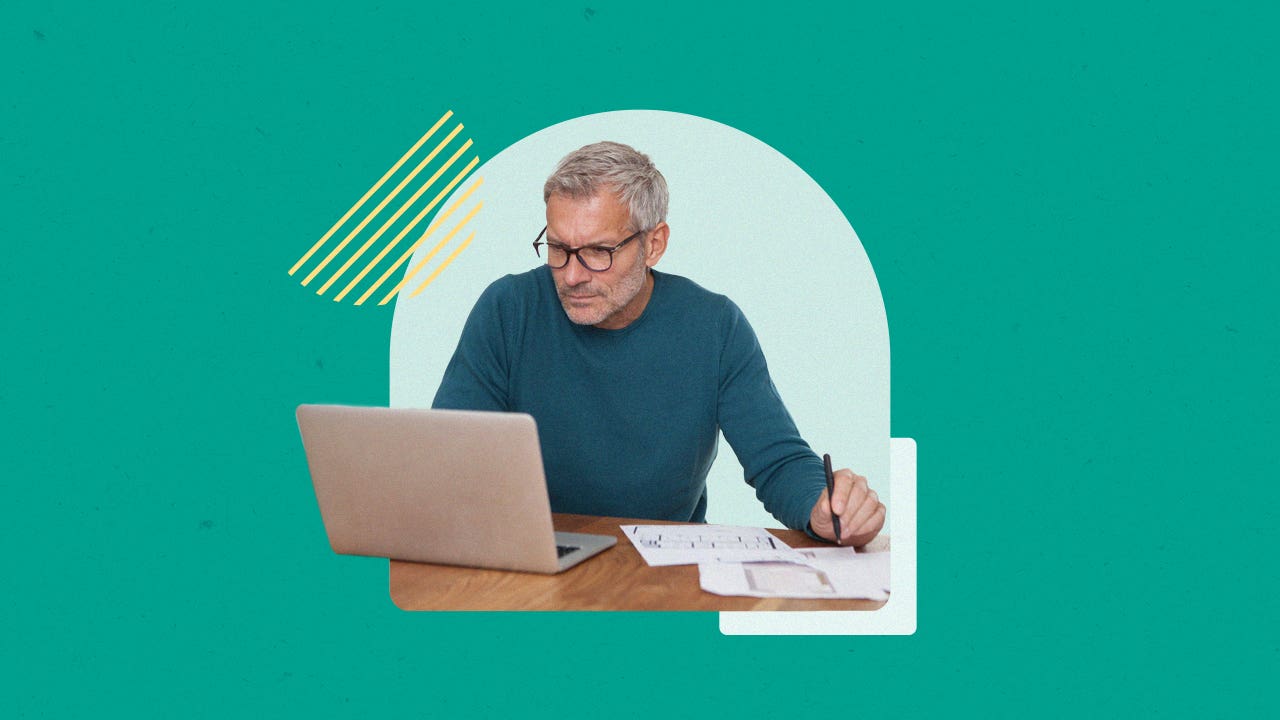Secured vs. unsecured debt: What’s the difference?

Key takeaways
- Secured debt uses an asset as collateral to secure the loan, while unsecured debt doesn’t require any collateral. If a borrower fails to repay the loan as agreed, the lender can seize the collateral.
- Mortgages, home equity loans, home equity lines of credit (HELOCs) and auto loans are all forms of secured debt, while most personal loans, credit cards, student loans and medical loans are unsecured debt.
- The use of collateral typically means less risk for lenders, which allows them to offer lower interest rates and more flexible terms on secured debt.
When you take out a loan, you’ll usually choose between secured and unsecured forms of debt. The most notable difference between these two debt options is that secured debt uses assets as collateral for the loan. For example, with a mortgage loan, the home typically serves as mortgage collateral. Unsecured debt does not require collateral.
This single distinction changes the risk profile for the lender, which has a ripple effect on loan terms, interest rates and the application process.
Before applying for a new loan or line of credit, understand the differences between secured and unsecured debt.
What is secured debt?
Secured debt is a loan or credit line backed by an asset, such as a car or a house. If you default on a secured debt, the creditor can seize the asset. This recourse for the lender is usually more straightforward than alternatives, such as sending the debt to collections or suing you for payment.
Examples of secured debt include:
- Auto loans: Loans used specifically to finance automobile purchases. The vehicle purchased serves as collateral.
- Home equity lines of credit (HELOCs): Credit lines that allow you to convert some of your home equity into cash, using your home as collateral. You can borrow against the credit line as needed, up to the limit, during the draw period. In some cases, you can defer repayment of the principal balance and make interest-only payments during the draw period. This flexible borrowing option is often used for home maintenance projects and emergency home repairs, but it’s also useful for consolidating high-interest credit card debt. HELOCs usually offer a variable interest rate, although some lenders now offer fixed-rate HELOCs or HELOCs with rate-lock options.
- Home equity loans: Like HELOCs, home equity loans let you convert a portion of your home’s equity into cash, using your home as collateral. However, instead of providing an open credit line to borrow against, home equity loans give you the agreed-upon amount in a lump sum. Repayment of principal and interest begins immediately, typically with a fixed interest rate. Like HELOCs, home equity loans are often used to finance home improvements or consolidate debt.
- Mortgages: Loans specifically designed to finance real estate purchases, using the real estate as collateral.
- Secured credit cards: Secured cards work like traditional credit cards but require a security deposit (usually equivalent to the credit limit) which serves as collateral. If you fall behind on payments, the card issuer can take the amount owed from the deposit. Secured credit cards are often used to repair credit or build good credit from the ground up.
Most secured debt, including the examples above, is considered consensual. This means you voluntarily agree to list your property as collateral for the loan. But secured debt can also be non-consensual. This is when your assets become collateral for debts without your approval, typically through a legal or statutory process. Examples of nonconsensual debts include:
- Child support liens: If a parent fails to pay child support, a lien may be placed on their real estate or other significant assets.
- Homeowner association (HOA) liens: If a homeowner fails to pay HOA dues or assessments, the HOA can place a lien on their home.
- Judgment liens. When a creditor wins a lawsuit against a borrower, the court could place a lien on the borrower’s property to secure payment of the judgment.
- Mechanic’s or contractor’s liens. If a contractor or supplier is not paid for work or materials provided for a property, they can file a lien against the property until payment is made.
- Tax liens. The government can place a lien against the taxpayer’s property if taxes go unpaid.
- Utility liens. Some municipalities can place liens on property for unpaid utility bills, such as water or sewer services.
What is unsecured debt?
Unsecured debt is a loan or line of credit not backed by collateral. If you default on unsecured debt payments, the lender has no property to seize to recoup its losses. Instead, lenders will employ other strategies to recover payment, which could include charging late fees, sending your account to collections or even suing for payment.
Examples of unsecured debt include:
- Credit cards: Credit cards are a type of revolving debt, typically with higher interest rates than other forms of unsecured debt.
- Medical loans: Loans used specifically to cover the cost of medical treatments and procedures.
- Personal loans: Lump-sum loans that generally allow you to spend the funds for any purpose. However, some lenders don’t allow borrowers to use the funds for business or college tuition.
- Student loans: Loans specifically for higher education expenses, such as college tuition, room and board and course materials.
Secured debt vs. unsecured debt: What are the differences?
Here is a deeper look at the considerable differences between secured and unsecured debt.
Collateral requirement
Secured debt requires borrowers to list an asset as collateral for the loan while unsecured debt does not. This primary distinction is the reason for all other differences between these two financial products.
Borrower risk
A lender can seize any asset listed as collateral for a secured debt if the borrower defaults on the loan. As unsecured debts don’t use collateral, there is less risk of asset loss in the event of a default.
However, it is important to understand that defaulting on any loan can potentially result in late fees, debt collections, credit score decline and even legal action.
Lender risk
Secured debts mean less risk for the lender since collateral seizure is a straightforward mechanism to recover losses in the event of default. Borrowers may also be less likely to default on secured loans, knowing that default could result in the loss of their property.
Interest rates and loan limits
The interest rates on secured debt products tend to be lower because this debt type poses less risk to the lender. Loan limits, meanwhile, tend to be higher on secured debts based on the value of the collateral.
Credit score criteria for loan approval
Since the risk is lower for lenders issuing a secured debt, they may be less strict with their credit score criteria.
Secured credit cards are a good example. These are often issued to borrowers with poor credit or too little credit history to qualify for an unsecured credit card.
Secured debt can be a better option for people with poor credit history or those with no credit history. It’s also a fantastic tool if you have experienced financial hardship and are looking for ways to rebuild your credit.
Responsible use of a secured loan can improve your credit score so you’re eligible for favorable unsecured loans in the future. Furthermore, some secured credit cards offer additional benefits like free identity theft and credit monitoring.
Approval process
Most unsecured debt products have a seamless application process and fast funding times. Approval for secured debts typically takes longer because the asset often needs to be appraised to confirm its value before it can be used as collateral.
|
Secured |
Unsecured |
|
|
Collateral requirement |
An asset must be used as collateral |
No collateral required |
|
Borrower risk |
Higher as failure to repay the loan could result in the loss of their collateral |
Lower because there is no collateral to seize. However, failure to repay the loan can still result in serious consequences like late fees, collections, credit score hits and even litigation |
|
Lender risk |
Lower because collateral can be seized to offset losses |
Higher because there is no collateral to seize |
|
Interest rates |
Typically lower because there is less risk for the lender |
Typically higher because there is greater risk for the lender |
|
Loan limits |
Typically higher because the loan limit is usually based on the value of the collateral |
Typically lower because there is no collateral to back the loan |
|
Credit score criteria for loan approval |
Typically less strict because there is less risk for the lender |
Typically more strict because there is more risk for the lender |
|
Approval process |
Typically takes longer as it may require asset valuation and additional paperwork |
Typically faster, with fewer requirements |
Which type of debt should be paid off first: Secured or unsecured?
When paying bills each month, it’s generally best to prioritize secured debt payments to avoid the risk of default and subsequent forfeiture of your collateral.
However, when paying off debt in a strategic repayment plan, it is usually better to prioritize debts by interest rate rather than secured vs. unsecured. Debts with higher interest rates cost you more in total interest payments. By paying those debts off as quickly as possible, you can potentially save thousands of dollars in interest expenses over the years.
Take unsecured credit cards, for example. These lines of credit often have extremely high interest rates (unless you have a card with a 0 percent APR introductory period). By paying high-interest credit cards off first, you save on interest expenses while simultaneously improving your credit utilization rate, which can increase your credit score.
When the highest-interest credit card balance is paid in full, you can apply the amount you’ve been paying on that debt to the card with the next-highest interest rate to pay off that second card even faster. This effective debt repayment strategy is known as the avalanche method.
The bottom line
Both secured and unsecured debt can provide much-needed funding for a variety of purposes. However, these options come with different risks, requirements and repayment terms.
In some cases, secured debt may be your only option. For example, when using financing to buy a home or get a car, your lender will likely require that you use the new asset as collateral for a secured loan.
In other cases, you may be able to choose between a secured loan or an unsecured loan. Credit cards, for instance, can be secured or unsecured.
When deciding between secured and unsecured debt, compare the qualification criteria, loan limits, interest rates and risks to determine which option is the better fit.
You may also like

How to get a small business loan without collateral

Fixed vs. variable student loan rates: Which is best?

Secured vs. unsecured short-term business loan

Secured vs. unsecured personal loans: Key differences


